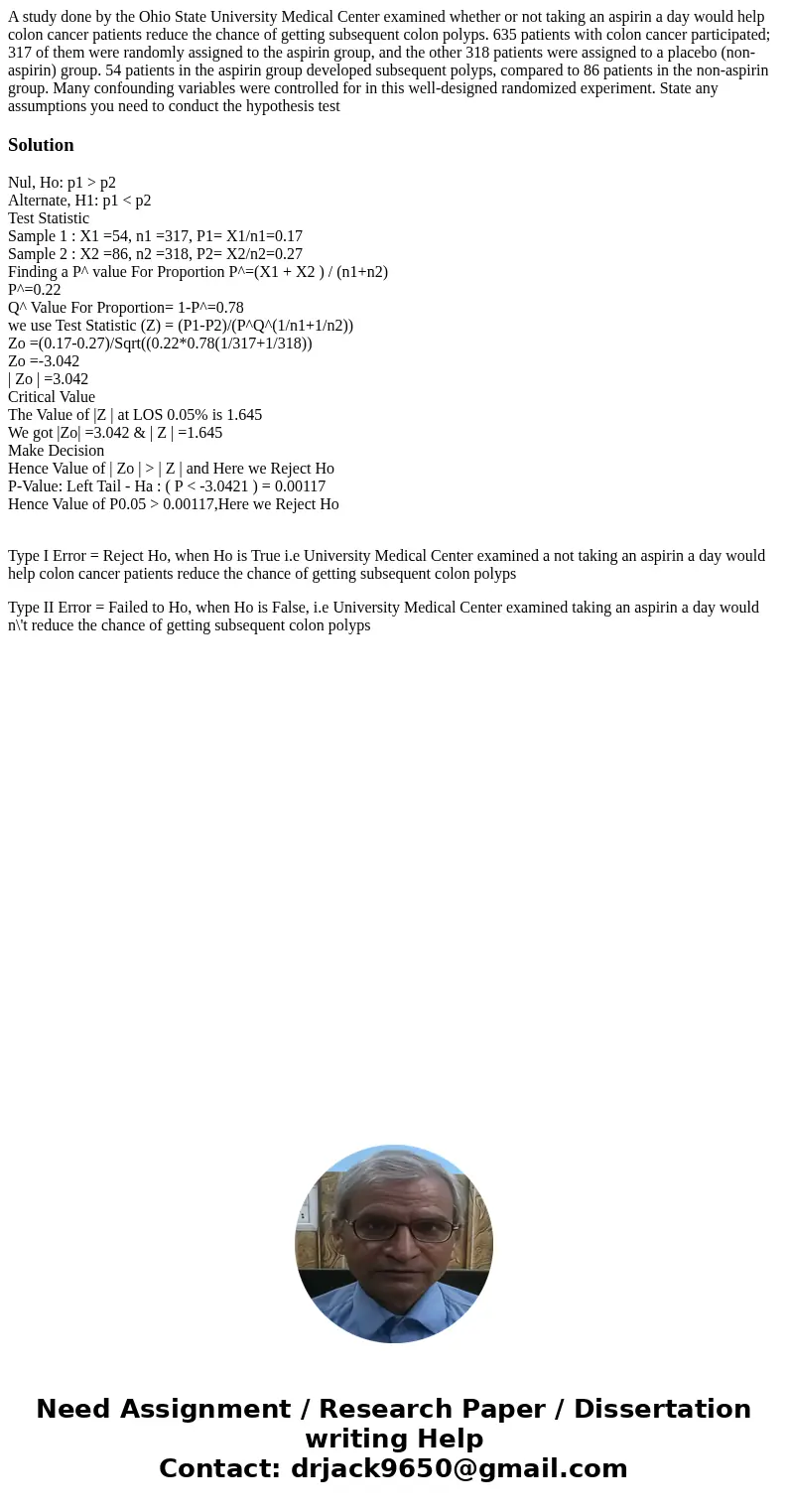A study done by the Ohio State University Medical Center exa
A study done by the Ohio State University Medical Center examined whether or not taking an aspirin a day would help colon cancer patients reduce the chance of getting subsequent colon polyps. 635 patients with colon cancer participated; 317 of them were randomly assigned to the aspirin group, and the other 318 patients were assigned to a placebo (non-aspirin) group. 54 patients in the aspirin group developed subsequent polyps, compared to 86 patients in the non-aspirin group. Many confounding variables were controlled for in this well-designed randomized experiment. State any assumptions you need to conduct the hypothesis test
Solution
Nul, Ho: p1 > p2
Alternate, H1: p1 < p2
Test Statistic
Sample 1 : X1 =54, n1 =317, P1= X1/n1=0.17
Sample 2 : X2 =86, n2 =318, P2= X2/n2=0.27
Finding a P^ value For Proportion P^=(X1 + X2 ) / (n1+n2)
P^=0.22
Q^ Value For Proportion= 1-P^=0.78
we use Test Statistic (Z) = (P1-P2)/(P^Q^(1/n1+1/n2))
Zo =(0.17-0.27)/Sqrt((0.22*0.78(1/317+1/318))
Zo =-3.042
| Zo | =3.042
Critical Value
The Value of |Z | at LOS 0.05% is 1.645
We got |Zo| =3.042 & | Z | =1.645
Make Decision
Hence Value of | Zo | > | Z | and Here we Reject Ho
P-Value: Left Tail - Ha : ( P < -3.0421 ) = 0.00117
Hence Value of P0.05 > 0.00117,Here we Reject Ho
Type I Error = Reject Ho, when Ho is True i.e University Medical Center examined a not taking an aspirin a day would help colon cancer patients reduce the chance of getting subsequent colon polyps
Type II Error = Failed to Ho, when Ho is False, i.e University Medical Center examined taking an aspirin a day would n\'t reduce the chance of getting subsequent colon polyps

 Homework Sourse
Homework Sourse